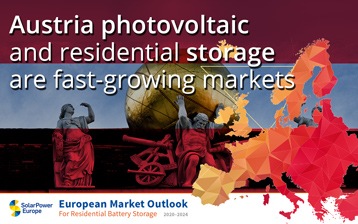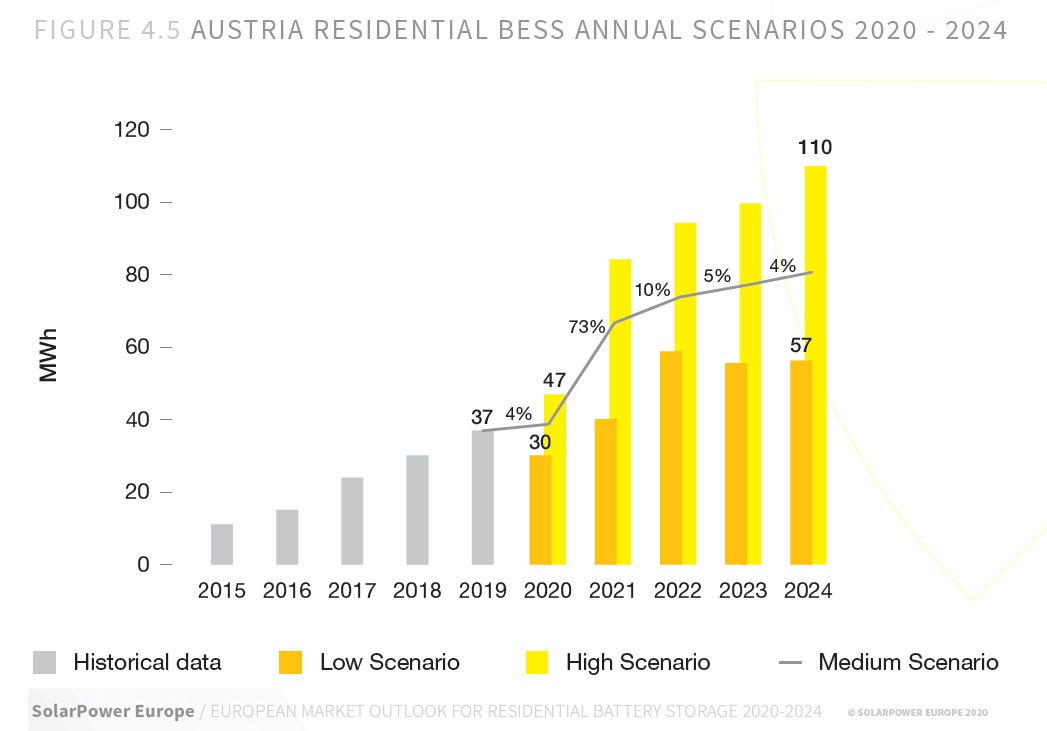Austria has been very attentive to green policies for a long time and has over time modified its growth programs in the photovoltaic and residential storage sector.
Incentives for photovoltaic installations since 2012
A first incentive for the installation of both residential and commercial rooftop photovoltaic systems was born in 2012 and is still valid.
For small plants under 5 kW a one-off fee is provided whereas, as in many other countries, for plants between 5 and 200 kW the incentive is based on an incentive rate which is only active for 13 years, unlike the 20 years given in many other states.
Every year there is an adjustment of the incentive and of the maximum amount given for small plants which varies with the decrease in the average price of the photovoltaic system.
Residential storage: from 2015 the first installations start in 2018 the first incentives
With regard to residential storage, the first installations started in 2015, only in 2018 did Austria implement an incentive for the first time.
According to SolarPower Europe’s European Market Outlook For Residential Battery Storage, the cumulative installed at the end of 2019 is 18.000 systems for a total of 120 MWh.
Growth forecasts in 2020 an increase of + 4%
Also according to this study, the expectation for 2020 was for Austria to overtake UK in the general ranking of European States for the installation of residential storage systems with the forecast that 39 MWh would have been installed by the end of the year, compared to the final 37 MWh recorded in 2019.
It means an annual increase of 4%, a not very high increase due to the negative impact of the Corona Virus given that in recent years from 2015 onwards the growth rate has always been above 20% annually.
Austrians choose energy self-sufficiency
The other factors that contribute to the installation of storage systems in Austria are the ethics and the ambition of the average citizen to become as self-sufficient as possible. Also take into account that the subsidy for the feed-in of energy into the grid from the PV systems is very low, around 0,08 € / kWh and is gradually decreasing.
By 2030 100% renewable energy
The prospects for the future are very good since the ambitious goal of covering the entire national energy needs from renewable sources is under discussion within the Austrian government for the not far 2030.
Basically, they want to increase the goal they had set in 2018 by 10 times in order to have 100,000 solar roofs.
In 2019, a new incentive program for photovoltaics and storage
In September 2019, a new incentive program which provides an annual budget of 36 million euros until 2023 was launched to support both the PV systems and the storage, so the prospects are for stable growth for the next few years.
By 2021, new smart meters for all homes
Furthermore, by the end of 2021, SolarPower Europe’s forecasts indicate the completion of the installation of smart meters in homes throughout Austria so as to start new electricity tariffs that will positively involve storage. All this adds up to regional building regulations that require the installation of photovoltaic systems in new homes.
Market doubling between now and 2024
In conclusion, a doubling of the market is expected between now and 2024, although from 2023 there should be a slowdown in installations compared to previous years considering the closure of the incentive mentioned here above.







